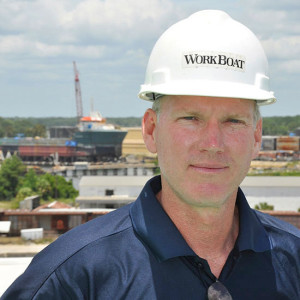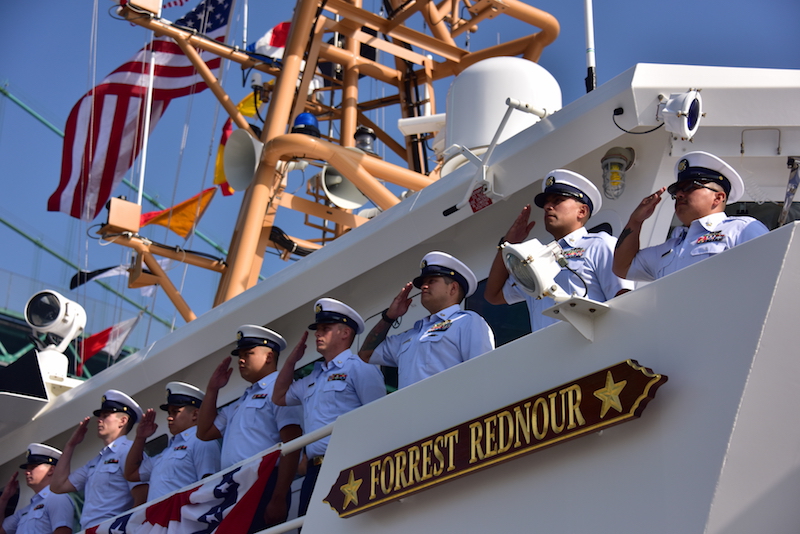The Coast Guard commissioned the first California-based 154-foot fast response cutter in San Pedro on Thursday.
The Coast Guard cutter Forrest Rednour is the first of four Sentinel-class FRCs to be homeported at Base Los Angeles-Long Beach.
Three additional FRCs are scheduled to be commissioned by summer of 2019. While these ships will be based in San Pedro, they will operate throughout the 11th Coast Guard District, which includes all of California and international waters off of Mexico and Central America.
"This cutter is specifically designed to face today's threats in the maritime domain," said Rear Adm. Peter Gautier, the 11th Coast Guard District commander. "This cutter is faster, goes farther and can do more than any other Coast Guard patrol boat."
FRC’s are 154' multimission ships designed to conduct: drug and migrant interdictions; ports, waterways and coastal security operations; fisheries and environmental protection patrols; national defense missions; and search and rescue.
"This crew and I are truly honored and humbled to be assigned to serve as plank owners aboard this cutter named for a true Coast Guard hero," said Lt. Graham Sherman, the Forrest Rednour commanding officer.
To date, the Coast Guard has accepted delivery of 31 FRCs. Each ship is designed for a crew of 24, has a range of 2,500 miles and is equipped for patrols up to five days. The FRCs are part of the Coast Guard’s overall fleet modernization initiative.
FRCs feature advanced command, control, communications, computers, intelligence, surveillance and reconnaissance equipment as well as over-the-horizon response boat deployment capability and improved habitability for the crew. The ships can reach speeds of 28 knots and are equipped to coordinate operations with partner agencies and long-range Coast Guard assets such as the Coast Guard’s National Security Cutters.
FRCs are named in honor of Coast Guard enlisted leaders, trailblazers and heroes. The four California-based FRCs are scheduled to be:
- Forrest Rednour (WPC-1129) - Rednour aided in the rescue of 133 people during the sinking of the U.S.A.T. Dorchester, Feb. 3, 1943. He was awarded the Purple Heart and Navy and Marine Corps Medal for his actions. Rednour lost his life in the sinking of the Coast Guard cutter Escanaba in June 1943.
- Robert Ward (WPC-1130) - Ward operated beach-landing boats during the Normandy invasion. He landed his craft on the Cotentin Peninsula and rescued two stranded boat crews in the face of a heavily fortified enemy assault.
- Terrell Horne III (WPC-1131) – Horne was murdered by suspected drug smugglers who intentionally rammed the boat he and fellow Coast Guardsmen were aboard during law enforcement operations near Santa Cruz Island off the Southern California coast in 2012. Horne pushed one of his shipmates out of the way of the oncoming vessel attack and sustained fatal injuries.
- Benjamin Bottoms (WPC-1132) – Bottoms was part of the Coast Guard air crew that rescued an Army aircrew from a downed B-17 off the west coast of Greenland in 1942. Bottoms and the pilot conducted the first landing of a cutter plane on an icecap and commenced a two-day rescue over a rugged arctic terrain that required multiple flights. During the second day of rescue operations, radio contact with Bottoms’ plane was lost and he was declared missing in action.




